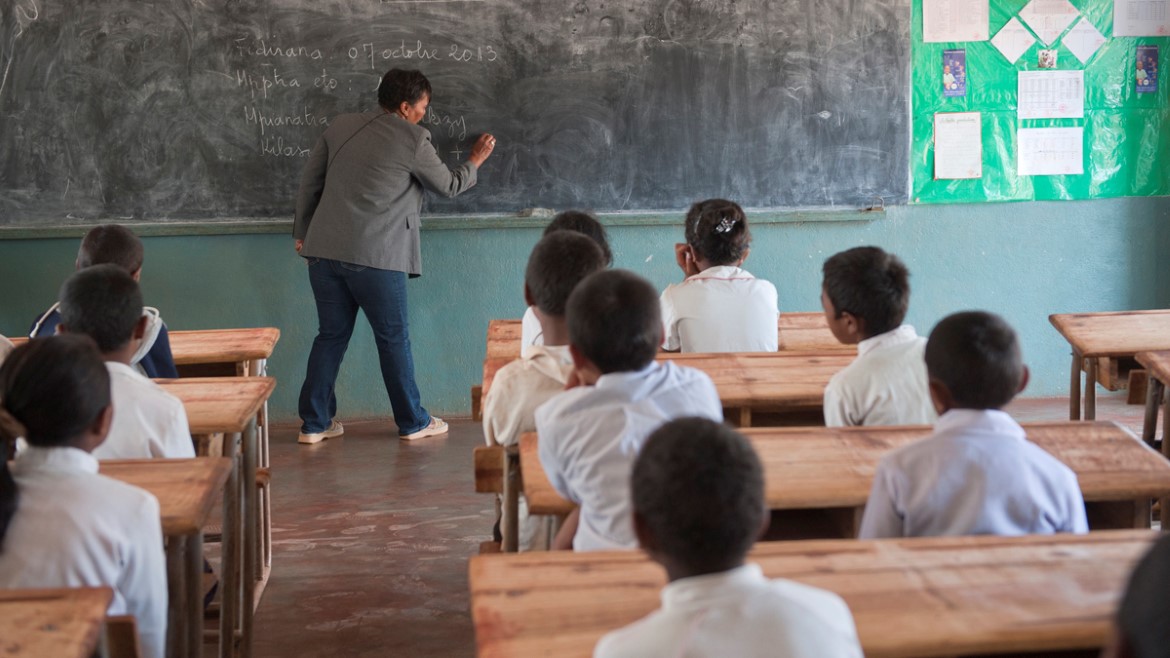
Major challenges in aid for education
During the period 2009-2013, Norway has given NOK 3,79 billion to multilateral organizations. UNICEF and the Global Partnership for Education (GPE) receive the bulk of these funds. Nearly three quarters go to UNICEF and almost a quarter goes to GPE.
The Evaluation Department of the Norwegian Agency for Development Cooperation (Norad) has commissioned an independent evaluation. The evaluation team has examined UNICEF’s and GPE’s work within basic education.
A key question is whether UNICEF and GPE are effective channels for Norwegian assistance.
- The evaluation has examined programme results, aid management and financing of education. Parts of the report contains serious criticism, says Eva Kløve, project manager in Norad’s Evaluation Department.
- UNICEF and GPE were also praised for some of their work, especially for getting more girls to school. They have also contributed to a better learning environment for children.
- Read the evaluation report
Inadequate management
UNICEF receives criticism for the quality assurance of their aid. They achieved only moderate scores in terms of financing, clarity of accountabilities, technical support and staff qualifications. They are rated poorly in terms of managing their aid in a way that increases the likelihood of achieving intended programme results. One problem is that they mainly report on immediate results, like teacher training, rather than on outcomes such as whether the training has led to children learning more at school.
- When effects are measured, it is often not consistent. Therefore, it becomes difficult to know what has happened. There is considerable variation in the reporting from UNICEF’s country offices, says Kløve.
The evaluation highlights that UNICEF obtains good rating on setting overall priorities and on their Board representation. This also applies to GPE. GPE scores well on financing, technical support and staff qualifications. GPE also receives good feedback for external reviews it conducts for quality assurance purposes. Beyond this, GPE obtains moderate scores in the evaluation report.
One of GPE’s biggest weaknesses is the quality of the national education plans, which are approved by GPE before funds are released.
Learning outcomes
One of the most important goals for the Norwegian aid to basic education is increased learning outcomes.
Only one of the ten evaluated countries, Ethiopia, were able to document the achievement of this goal.
Mali and Mozambique could show partly successful results.
The remaining seven countries could not document having achieved this goal.
In most of the evaluated countries, Unicef and GPE built more classrooms. Teachers received training and learning materials were distributed. The countries that did not show increased learning outcomes, were more concerned with such input factors than by factors that are more important to achieve better learning. Examples of these factors are how much time each teacher use per student, and whether the classes are taught in the children’s mother tongue.
Recommendations
The evaluation report comes with several recommendations to achieve better results and better aid management in UNICEF and GPE.
Some of the recommendations:
- Place a higher priority on appropriately measuring and improving learning outcomes. Strengthen the emphasis in each country on the needs of marginalized groups. Vigilantly promote gender equity in enrolment and learning outcomes in the higher grades of basic education.
- UNICEF should dramatically improve the analytic rigor, clarity, and consistency of the documentary trail for its activities.
- GPE should clarify responsibilities between partners at country level.
- GPE should find ways to increase the quality of national education plans, while continuing to follow the principle of national ownership.
